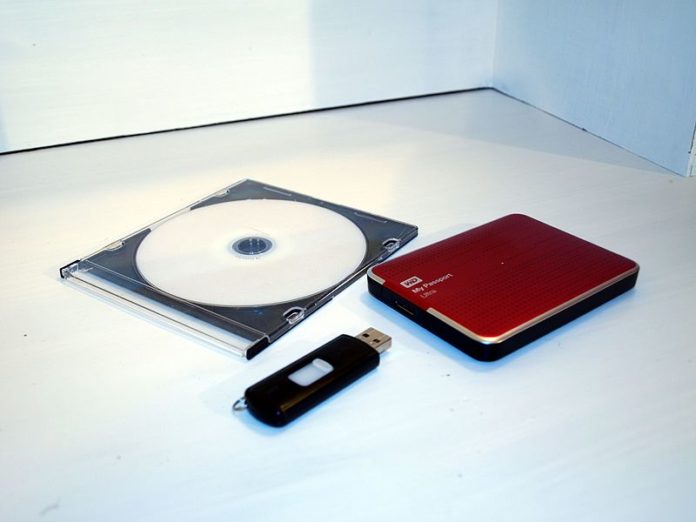Data storage is efficient for backing up files and safekeeping. It’s also ideal for a quick recovery if you face any cyberattack or computing crash.
However, to ensure successful data recovery, storage media are used. There are different types of media that are used for both backing and archiving. This includes hard drives, SSDs, and USBs.
Each of them allows you to create a backup for files like images, audio, videos, etc., for unfortunate situations. Let’s learn more about it in detail:
Hard Drives
Hard drives (hard disk or HDD) store applications, operating systems, and data files like pictures, applications, etc. It’s a proven technology that can store large data, which is variable as per the size of the drive. HDDs are cheaper, more durable, and well-functioning than other media.
In fact, they are cheaper than SSDs with the same amount of storage. Presently, you can find HDDs that have greater storage space than SSDs.
External hard drives are attached to the computer through a USB port. Note that they are not a replacement for the internal drive. Rather, they work as an external drive that is portable. This means you can move them between computers and share data easily.
SSDs and Flash Drives
SSDs and flash drives are fast, efficient-performing, and easily accessible storage media. Both of these mediums use flash technology to read/write the data in a quick way.
SSDs don’t require space as hard drives. They are worth using if you want the best performance in gaming or loading operating systems.
Flash drives, on the other hand, are a medium for storage, supplementary backups, and transferring of computer files. They are smaller, faster, and more capable/durable as there aren’t any moving parts.
CD and DVDs
CDs and DVDs are traditional means of storage media that are easy to use and find. They are ideal for backing up different data files on your systems. Remember, CDs and DVDs have limited storage capacity.
So, you can use them for storing small amounts of data. While CDs have a storage capacity of 700 MB, for DVDs, it’s higher. They can store about 4.7 to 8.5 GB in a hassle-free manner.
If you are storing media on CDs or DVDs, make sure you are using archival-quality discs. They could be a bit fragile, so keep the discs clean and hold them by the edges. Also, if you see any fingerprint impression on the surface, wipe it down instantly with a clean and soft cloth.
We also recommend you to write the discs at a slower speed. This will ensure better write integrity and minimal rewrites. Make sure to familiarise yourself with common data recovery issues before you start with the recovery process.
Tips to Avoid Losing Data
While backup is a great initiative to secure your data, there are several other tips that you can try to avoid data loss from your systems:
- Select a firewall or an antivirus that protects any sensitive data. The software should be designed to handle the size, scope, and other requirements of the stored files.
- You must have an interruptible power supply to prevent any power surges or outages. If you keep avoiding such things, it could create havoc on your system.
- Consult professionals from SalvageData.com if the data recovery seems too complex.
- Make sure you have a disaster recovery plan handy. If you are running an organization, train your employees with all the dos and don’ts for data protection.
- Dust can cause overheating. So, keep your computer/systems clean in a dry and dust-free area. You must stay aware of humidity, as it can lead to rusting.
So, these are some of the storage mediums that you can use for backup in emergencies.










